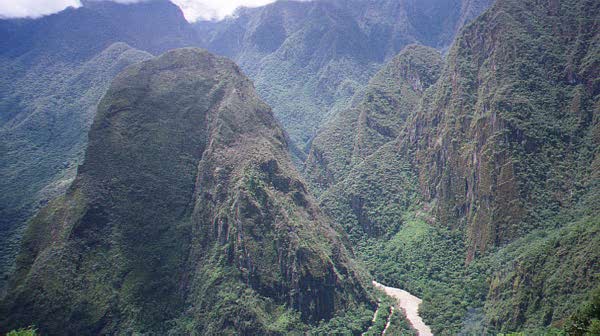
One section of the Urumbamba gorge. Note train tracks to the left of the river.
The next day we had another early wake-up call for our train ride to Machu Picchu, the lost city of the Incas "discovered" in 1911 by Yale archeologist Hiram Bingham. I have to admit I didn't know much about it beyond that and the few pictures I'd seen, so I was totally unprepared for the majesty of the Urumbamba gorge, the Andes and Machu Picchu itself.

The train ride took several hours, descending from Cuzco through the steep walls of the gorge. Each bend we'd round would bring an even more spectacular vista as we reached a lower elevation where the cloud forest began. It was hard to imagine a few thousand feet could make such a difference in the temperature and vegetation.
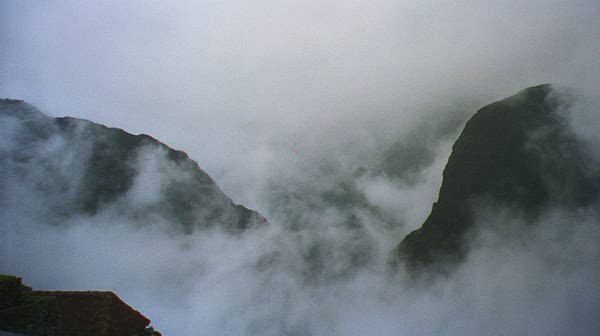
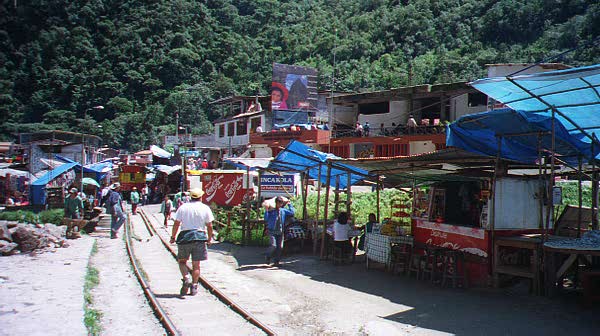
Merchants at the base of Machu Picchu
Arriving at Machu Picchu late morning, we settled into the semi-tropical surroundings of our hotel, long enough to eat lunch and prepare for the trip up the mountain to the site of the ruins by bus. The trip was to take about a half an hour; 11 miles up 16 switchbacks to the crest of the mountain.


Machu Picchu
The first thing we did was climb to the place where the inti watana or sun clock was. This is a carved stone that marked the solstices and equinoxes. We had the good fortune of being there at midday, two days before the equinox, and on a sunny day. It was amazing to see the thin line of shadow that would completely disappear in two days when the sun reached it's zenith.

After a brief history of the area and the Incas, we were given free time to explore the ruins on our own. To see this city, perched on the crest of a mountain, I had to wonder what ever possessed these people to build such a wonder. Obviously they realized it was impressive as well! Building terraces for growing crops were amazing enough, but to clear the top of the mountain off for a city was almost incomprehensible.
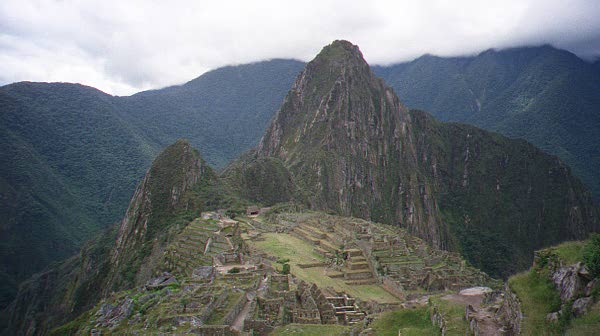
We returned early the next morning to find the mountains shrouded in fog. The plan for the morning was to hike a portion of the Inca trail to the Gate of The Sun, a structure in a high pass lined up with buildings in Machu Picchu having significance to the solstices as well. I was certain the fog was going to lift (optimist that I claim to be!), so didn't' bring any rain gear with me. Well, I was fortunate that it was warm out, because we got dumped on. The only time I wasn't getting soaked was when we hiked higher than the clouds that were producing the rain.


Stone work at the Gate of The Sun
About half of our group opted for the hike, but the most inspirational of all was an 81 year-old woman in our group who led the way up the mountain. I only hope I have her stamina at that age! She was amazing! Even though the fog was obscuring, what was no doubt a magnificent view of Machu Picchu, we were glad we'd made the trip, rain and all, if for no other reason than to say we did it. I didn't expect to be so moved by seeing Machu Picchu; there's no way pictures can do it justice .
Later, we took the train back to Cuzco, for one last night in the Peruvian Andes before our early morning flight to Lima and onto Quito in Ecuador. The people had been wonderful. I almost felt a sense of loss leaving Cuzco. There was so much more I wish I could have seen. I guess I'll just have to go back!
Quito is a bustling city with an interesting mix of the old and the new. It's the political capital of Ecuador, while Guayaquil, to the south, is the center of banking and commerce. To walk the narrow streets of Quito's Spanish Colonial section, it's almost if you stepped back in time. Aside from the vehicles clogging the barely passable streets, there's little to remind you that it's nearly 2000. Unfortunately we didn't see much of the old city as it was deemed not particularly safe for tourists. We did, however visit the President's residence (no tour that day) and the magnificent cathedral of San Francisco.
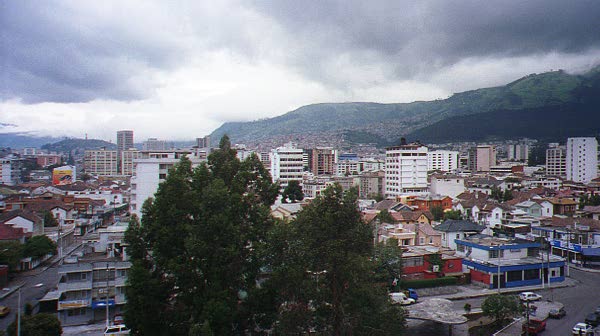
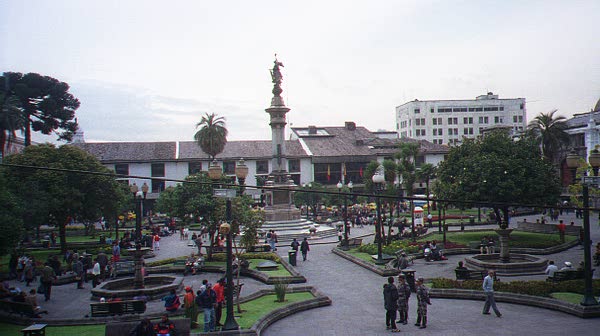
Quito's main square, leading into the old part of town
Quito, like Cuzco, spans the valley and stretches up the sides of the surrounding mountains and seems to go on forever. On Sunday there was a market in one of the city parks where some truly beautiful works could be found. From the traditional handicrafts to wonderful paintings. I noticed many of them had a surrealistic theme to them, which really appealed to me. The price was certainly right, but I had one small problem--how to fit a 16x20 painting into my bag to travel home? Needless to say, the memory of those paintings will have to suffice!
Later that afternoon we visited the monument at the equator, which also contained a small natural history museum, showcasing the different peoples of Ecuador and their lifestyles. The distinct cultures are as diverse as the many climates this small country has within it's borders.